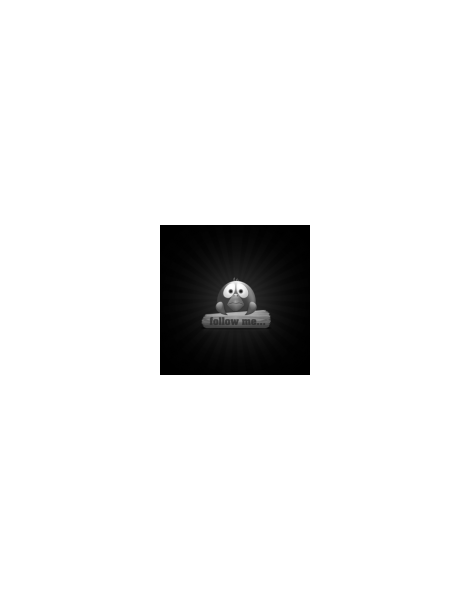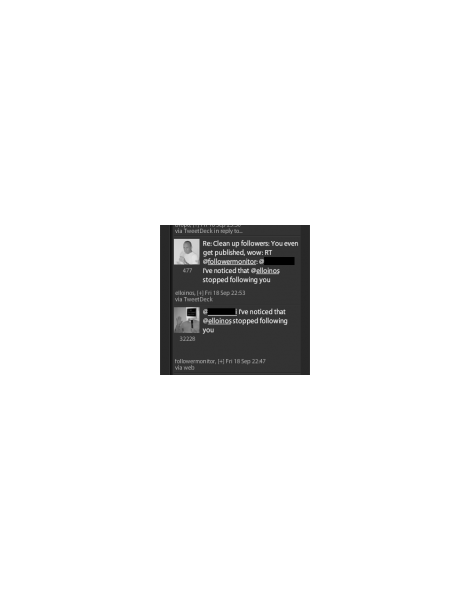 I love twitter; it is extremely useful for connecting with other people, having access to information flow, making contact etc. There is also some intrinsic dishonesty about the way twitter presents its users via its followers count. We are all aware that showing a large number of followers tends to come along with a positive notion, at least at first glance. It is so easy and tempting to simply follow back your new followers, it is a foolproof way of ensuring that your follower’s numbers stay high. I follow you – you follow me seems to be the mantra. But what does this really mean?
I love twitter; it is extremely useful for connecting with other people, having access to information flow, making contact etc. There is also some intrinsic dishonesty about the way twitter presents its users via its followers count. We are all aware that showing a large number of followers tends to come along with a positive notion, at least at first glance. It is so easy and tempting to simply follow back your new followers, it is a foolproof way of ensuring that your follower’s numbers stay high. I follow you – you follow me seems to be the mantra. But what does this really mean?
Twitter users who actively engage almost always use some sort of third-part application. Followers are sorted into different groups, which is a great way of organising them. And of course, many followers are not being assigned at all to a group, so their tweets do not show up. They follow you, you follow them, they probably don’t read your tweets; you don’t read theirs. They add to your followers count, you add to theirs. It works – as your followers number keeps growing, more people start following you. I now call this the Loophole Cheat – artificially inflating your own and their follower’s numbers while still following the etiquette.
Although I have always blocked spammers and sex sites in the past, I have cheated many times over the last months. To be exact, I have cheated 139 times. Can you believe that? I have followed back 139 people I was not really interested in. 139 out of 490 – or nearly 30% of the total! Last Friday, I put an end to it – I unfollowed everyone I should not have followed in the first place. My follower’s count was just shy of 500, 494 to be exact. I felt the effect immediately – my follower’s count started dropping quickly. My actions were even twittered by a service called followermonitor; apparently they think it makes a great tweet to publish openly who unfollows one of their users. It is sad – this service has more than 32000 followers.

In order to figure out whom I did not wish to follow any longer, I put in a day of work: I opened up the profile of every single person/company I was following and checked out their tweets. You know what the great thing was? I actually found a handful of very interesting people that never made it into one of my groups. I had followed them, but in the end I was ignoring them. I would have never found about it without going through this exercise.
I am in the wine business – so are approximately 80% of my followers, who I not only follow, but whose tweets I read. This is what is all about – I do not need high follower numbers, I do need to engage with people that matter. I am glad I no longer use the Loophole Cheat. It feels good to put out tweets to followers who follow you for a reason other than the expectation that you follow back.

Interesting point of view. I understand what you are saying. One problem is that when you start to follow lots of people in many different groups you sometimes struggle to know why someone has followed you.
You also have to remember that when Twitter changed the system so that you only see reply tweets when you also follow the person being mentioned, it made it more important to follow some ‘peripheral’ people so as to have a more complete picture of the conversations your real friends are having.
I get around this by following back quite a few people (many through the website and thus I’m unable to simultaneously add them to a Tweetdeck group) and then scanning my “All Friends” list from time to time to spot people or conversations I’ve missed in the groups. I then add them to my groups.
Remember, this is an informal conversation, and catching EVERY person and comment is not part of the plan.
Robert,
thanks for your engagement here. For those who don’t know, @thirstforwine follows 2000 people while being followed by more than 5000, so his input is clearly very valuable.
First of all, the above following/followers ratio speaks for yourself – you do not blindly follow other users. So we should see your comments in a slightly different light: It seems to fall into the practical aspects of managing your engagement once you have reached a critical number of people you might wish to engage with. In that respect, I agree with you. I have always wondered how it can be possible to really read most tweets when you follow more than 1000 people. I like your take on things that Twitter is an informal conversation, and as such, should be used accordingly.
In my post I was describing the way many twitter users operate. To me, it simply does not make any sense to follow other people back as an expected “thank you” gesture. I have done this in the past. As an example, there exists a list in Germany naming the most influential German speaking twitter accounts for wine. The list is based on the number of followers. I am included there, and would like to be included in the future, as it drives readers back to me. But every time I simply followed back a new follower, it did not feel right.
I wanted to make a statement with my action, getting other users to be a little more thoughtful about blindly following back. Is it not amazing that within minutes of unfollowing followers, they unfollow you? That fact in itself speaks volumes.
Hi Markus and Robert,
you are both absolutely right about not blindly following back people. But in the past, when I had doubts, I didn’t follow back.
In my online order form, I enclosed an entry called Twitter-Username.
And one of my Followers whom I had not followed back orderd some wine.
Uuups….
Now from time to time I receive DMs from him and even a DM order!
As soon as harvest has finished, I’ll be building a Web App, where I will sort and tag all of my followers. The interesting part will be, that I can build a guideline, who to follow and why. Just imagine a hand made catalogue ideal for beginners. So I still won’t unfollow that strongly, I need to sort them first.
Best regards
Patrick
Hi Patrick,
gosh, I am getting the prominent folks to comment on this post, thank you very much. For those who don’t know, Patrick is the owner/vintner at the Johner Estate in Germany and New Zealand.
I do love the fact that one of your followers whom you did not follow back turned into a customer – that is a great example of being able to engage people. Someone followed you who was honestly interested in reading your tweets – that is what it’s all about, to be able to connect to people who share a passion or an interest, or who might point you into new directions.
There are however many people who follow in order to receive a return follow. They never engage with you in a conversation, and most likely they never read your tweets. I am not advocating to block them, but so many will simply unfollow you within a week if you do not follow back. I guess that was my point, why should you follow back blindly? If they engage with you and add any value, you can always start following them in return. But there is little point in hitting the follow back button immediately, certainly when you check out their profile and can’t find a common theme.
I estimate that about three quarters of my followers today are in one form or another related to wine. This is a fact I appreciate a lot, as I am able to engage with folks that matter to me. The follower who is selling underwear for ladies might have been interest in learning about Greek wines, but after I unfollowed immediately threw in the towel.